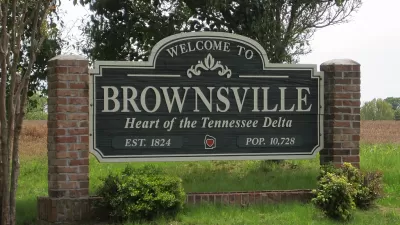A new report by the McKinsey Global Institute finds that the global consuming class will grow by 1 billion people by 2025, and undergo a profound geographic shift. Cities and businesses should prepare for this shift with targeted investments.
What do Shanghai, Lagos, Sao Paulo, and Istanbul have in common? According to a new report [PDF] from the McKinsey Global Institute (MGI), these cities and 436 others, dubbed the Emerging 440, will be responsible for contributing to nearly half of the growth in global GDP by 2025. This percentage roughly translates to $23 trillion.
MGI's recent report, Urban world: Cities and the rise of the consuming class, shows that "one billion people will enter the global consuming class by 2025," meaning that businesses should be aware of where new economic markets will form. According to the report, the world will see a profound shift in its center of economic gravity from the United States and Europe toward Asia and Africa.
MGI believes that analyzing the potential for a market at a regional or country level is not focused enough. Instead, companies should take a close look at individual cities because the markets are different even within regions. For example, both Sao Paulo and Rio de Janeiro are in the top 3 cities for growth in laundry care products by 2025. However, Sao Paulo is ranked 15th for potential growth in municipal water demand and is the only Brazilian city in that top 20 list.
The "tectonic shift" in consumption will demand a corresponding investment in buildings and infrastructure to cater to "the burgeoning urban consumer classes." The Urban world report states that, "cities will need annual physical capital investment to more than double from nearly $10 trillion today to more than $20 trillion by 2015." MGI suggests that this money go to bolstering the cities' infrastructure with more buildings, larger port capacity, and more available municipal water. These changes will hopefully allow the cities to grow with, and take advantage of, the emerging markets.
FULL STORY: Urban world: Cities and the rise of the consuming class

Americans May Be Stuck — But Why?
Americans are moving a lot less than they once did, and that is a problem. While Yoni Applebaum, in his highly-publicized article Stuck, gets the reasons badly wrong, it's still important to ask: why are we moving so much less than before?

Using Old Oil and Gas Wells for Green Energy Storage
Penn State researchers have found that repurposing abandoned oil and gas wells for geothermal-assisted compressed-air energy storage can boost efficiency, reduce environmental risks, and support clean energy and job transitions.

Placekeeping: Setting a New Precedent for City Planners
How a preservation-based approach to redevelopment and urban design can prevent displacement and honor legacy communities.

San Francisco’s Muni Ridership Grew in 2024
The system saw its highest ridership since before the Covid-19 pandemic, but faces a severe budget shortage in the coming year.

Colorado Lawmakers Move to Protect BRT Funding
In the face of potential federal funding cuts, CDOT leaders reasserted their commitment to planned bus rapid transit projects.

Safe Streets Funding in Jeopardy
The Trump administration is specifically targeting bike infrastructure and other road safety projects in its funding cuts.
Urban Design for Planners 1: Software Tools
This six-course series explores essential urban design concepts using open source software and equips planners with the tools they need to participate fully in the urban design process.
Planning for Universal Design
Learn the tools for implementing Universal Design in planning regulations.
Heyer Gruel & Associates PA
City of Moreno Valley
Institute for Housing and Urban Development Studies (IHS)
City of Grandview
Harvard GSD Executive Education
Salt Lake City
NYU Wagner Graduate School of Public Service
City of Cambridge, Maryland





























